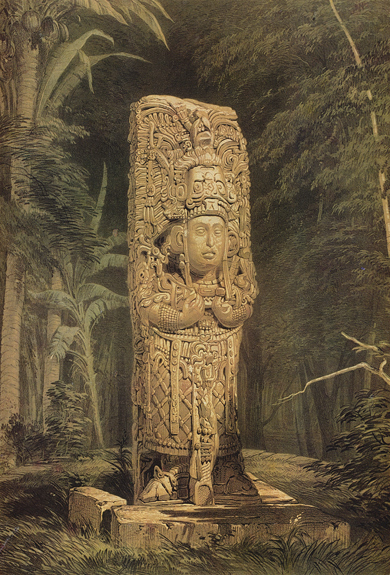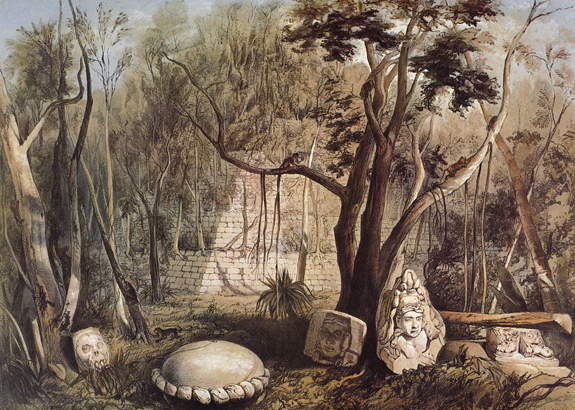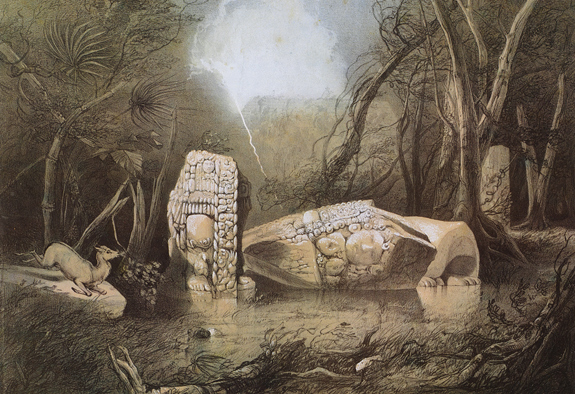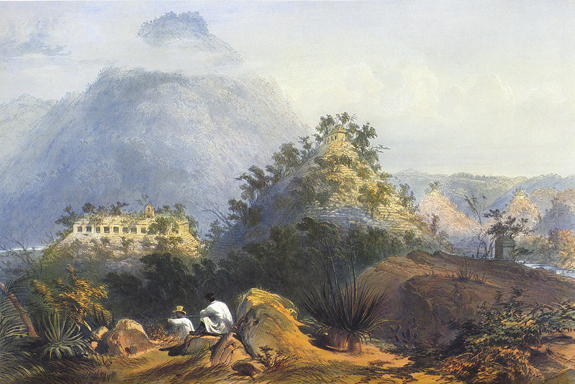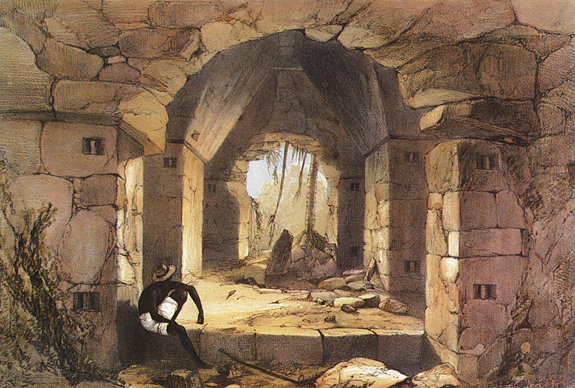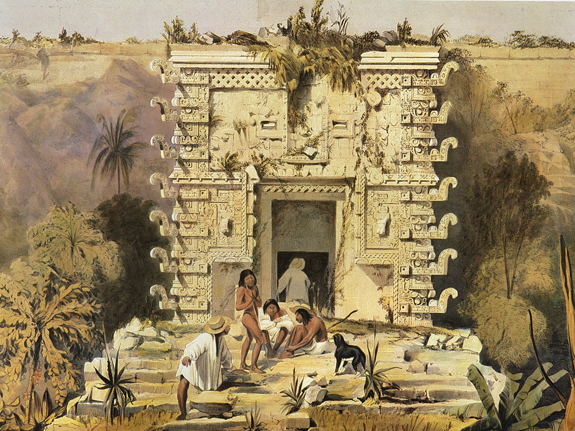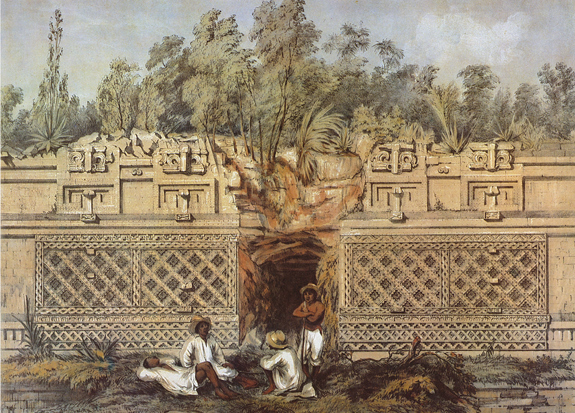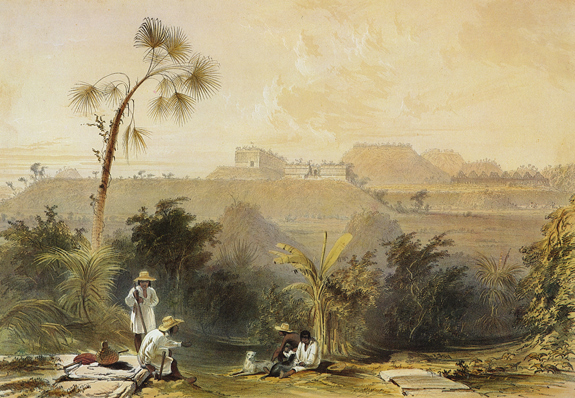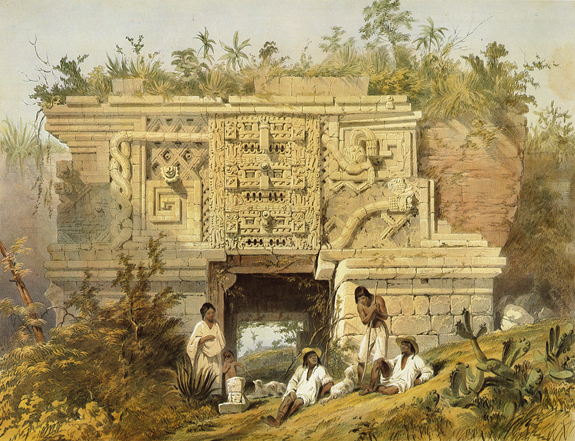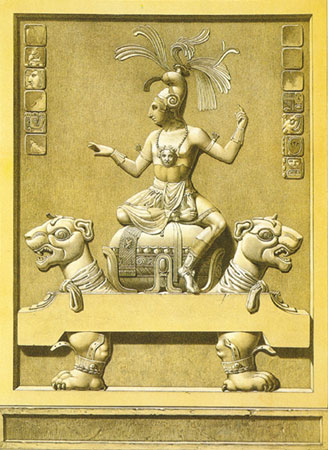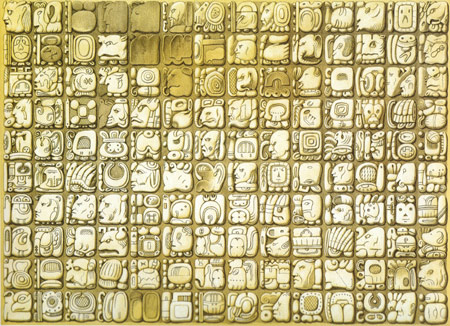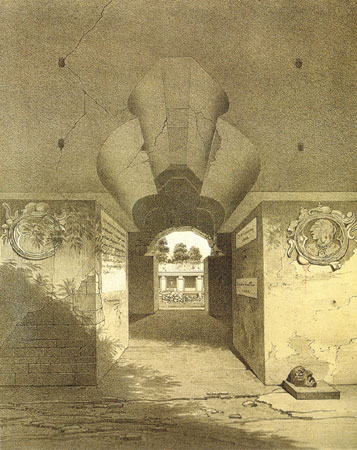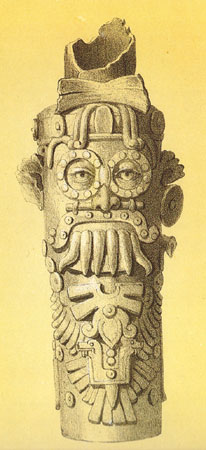Publicado el 9 de agosto de 2006:
_
Lámina 5: Ídolo y altar en Copán
_

_
__"A las profundidades de Copán, si tropezáramos con esta estela y este altar, podríamos ser tomados por sorpresa. La base del altar sobre el cual los mayas ofrecían sus sacrificios, aterra hoy en día. La estela representa al décimo tercer gobernador de Copán, el Rey Waxaklajun Ub’aah K’awiil (conocido también como el Rey 18 Conejos), llevando la máscara de un dios antiguo.
__La forma como Catherwood manipula la luz en sus bosquejos es lo que da vida a estas estructuras de piedra. La estela aparece iluminada, de tal forma que la fuente de luz proviene desde el fondo, por lo que las sombras de las manos aparecen arriba en lugar de abajo. El altar, sin embargo, parece estar debajo de la luz, de tal forma que las sombras del rostro caen por debajo de éste. Catherwood maneja la escena de tal forma que el altar irradie un aire de oscuridad. La estela en cambio ha sido representada con gran ímpetu, para darle un aire de antigüedad, que contrasta con el espíritu pacífico de las otras litografías de Copán, como en el caso de las láminas 1 y 3. "
* * * * * * * *
__La forma como Catherwood manipula la luz en sus bosquejos es lo que da vida a estas estructuras de piedra. La estela aparece iluminada, de tal forma que la fuente de luz proviene desde el fondo, por lo que las sombras de las manos aparecen arriba en lugar de abajo. El altar, sin embargo, parece estar debajo de la luz, de tal forma que las sombras del rostro caen por debajo de éste. Catherwood maneja la escena de tal forma que el altar irradie un aire de oscuridad. La estela en cambio ha sido representada con gran ímpetu, para darle un aire de antigüedad, que contrasta con el espíritu pacífico de las otras litografías de Copán, como en el caso de las láminas 1 y 3. "
* * * * * * * *
Idol and altar at Copan
_
__"Hiking through Copán and coming across this stele and altar, one might be taken aback. The face on the altar, on which the Mayas made sacrifices, seems frightening to us today. The stele represents the 13th ruler of Copán, King Waxaklajun Ub’aah K’awiil (in English, Lord 18 Rabbit), with a mask of an aged god.
__What gives life to these stone structures is the way Catherwood manipu-lated the light in his drawings. The stele is illuminated such that the source of light must have come from the bottom, as the shadows of the hands are above rather than below. The altar, however, appears under the light, as the shadows cast by the brows fall below them. Catherwood’s control of the scene gives the altar a darker attitude and portrays the stele as super-iorly fierce, giving it an aged identity as opposed to the tranquil curiosity that the other lithographs in Copán present, such as plates 1 and 3".
_
Ivonne García (Exposición )
__"Hiking through Copán and coming across this stele and altar, one might be taken aback. The face on the altar, on which the Mayas made sacrifices, seems frightening to us today. The stele represents the 13th ruler of Copán, King Waxaklajun Ub’aah K’awiil (in English, Lord 18 Rabbit), with a mask of an aged god.
__What gives life to these stone structures is the way Catherwood manipu-lated the light in his drawings. The stele is illuminated such that the source of light must have come from the bottom, as the shadows of the hands are above rather than below. The altar, however, appears under the light, as the shadows cast by the brows fall below them. Catherwood’s control of the scene gives the altar a darker attitude and portrays the stele as super-iorly fierce, giving it an aged identity as opposed to the tranquil curiosity that the other lithographs in Copán present, such as plates 1 and 3".
_
Ivonne García (Exposición )





